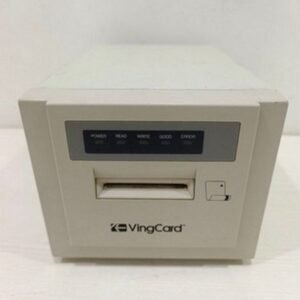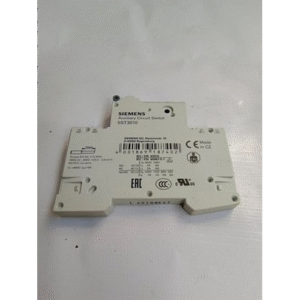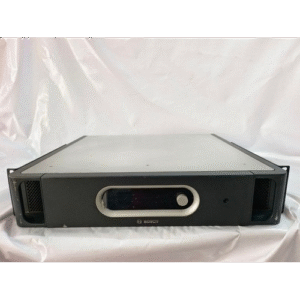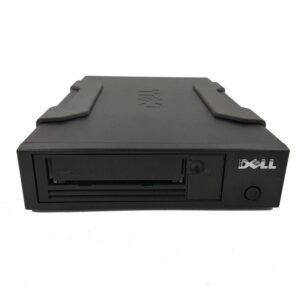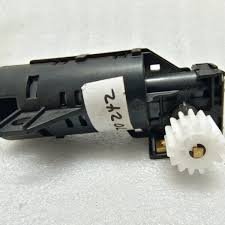- AUTOMATION EQUIPMENT
- ELECTRICAL ITEMS
- AMPLIFIER & UPS
- BATTERY CHARGER & INVERTER
- CIRCUIT BREAKER & BLOCKS
- CONTROL UNIT
- ELECTRIC CONTROLLERS
- FIRE ALARAM SYSTEM
- FUSES & CAPACITOR
- HEADPHONE & SPEAKER
- HMI & DISPLAY
- MISC ELECTRICAL
- PCB
- PLC SYSTEMS
- POWER SUPPLY
- PRINTER & CPU
- RELAY
- SENSORS
- SERVO DRIVES & MOTORS
- TELECOME & COMMUNICATION
- THERMOSTAT
- UNCATEGORIZED
NEOPIS EPIC R300 RECLOSER CONTROL F8 76 98 20 17 EE
₹65,864.00
| Product Conditioned | USED |
|---|
Free Shipping apply to all orders over $199
Guaranteed Money Back in 30 days return.
24/7 Customer Support
Share:
Hotline Order:
(+101) 5620 - 8155
Email ID:
xstore@support.com
The NEOPIS EPIC R300 is a sophisticated, microprocessor-based electronic control system designed to automate and manage the operation of a recloser—a key piece of equipment in electrical power distribution networks.
Its primary role is to enhance the reliability, safety, and automation of medium-voltage power lines by intelligently interrupting fault currents and attempting to restore power automatically.
Key Functions and Features:
-
Automated Reclosing Sequence:
-
This is the core function. When the R300 detects a fault (e.g., a tree branch touching a line), it commands the recloser to open (interrupt power).
-
It then waits a pre-programmed delay (e.g., 2 seconds) for a temporary fault to clear itself, and then commands the recloser to close, restoring power.
-
It typically follows a programmable sequence (e.g., “1 fast operation, 2 delayed operations, and lockout”) if the fault is permanent.
-
-
Protective Relaying Functions:
-
Overcurrent Protection (Phase & Ground): The primary protection. It continuously monitors current and trips the recloser if it exceeds preset thresholds (Pickup, Curve, Time Dial).
-
Sensitive Earth Fault (SEF) Protection: Detects low-level ground faults that standard overcurrent elements might miss, crucial for safety and detecting deteriorating insulation.
-
Underfrequency & Overfrequency Protection: Protects the network by shedding load or disconnecting generation if system frequency deviates from safe limits.
-
Undervoltage & Overvoltage Protection: Protects connected equipment from voltage abnormalities.
-
-
Communication and SCADA Integration:
-
The R300 is a key component of a modern Smart Grid.
-
It comes equipped with multiple communication ports (typically serial RS-485, Ethernet) supporting standard protocols like DNP3, IEC 60870-5-101/104, and Modbus.
-
This allows for real-time data monitoring (current, voltage, status), remote control (OPEN, CLOSE, RESET), and collection of fault and event records from a central control room (SCADA).
-
-
Data Recording and Diagnostics:
-
Oscillographic Capture: Records detailed current and voltage waveforms during fault events. This is critical for engineers to analyze the nature and cause of the fault.
-
Sequence of Events (SOE): Logs all control operations, trips, and changes of state with high-resolution time stamps (often synced via GPS-IRIG-B), making it easier to troubleshoot network events.
-
Fault Summary Data: Stores key information about each fault event (magnitude, location, time, etc.).
-
-
User Interface:
-
Features a backlit LCD display and a keypad for local configuration, manual control, and viewing real-time data and records.
-
Configuration is typically done using dedicated PC software provided by NEOPIS, offering a user-friendly graphical interface for setting all protection and control parameters.
-
Typical Applications:
-
Overhead Distribution Feeder Protection: The most common application, providing fault interruption and auto-reclosing for utility power lines.
-
Substation Automation: Acting as a feeder protection relay and control unit within a substation.
-
Circuit Segmentation: Used to divide a long distribution feeder into sections, isolating faults to minimize the number of affected customers.
-
Integration with Distributed Energy Resources (DER): Helps manage the bi-directional power flows and protection challenges introduced by solar farms and other distributed generation.
Decoding the Model/Code:
-
NEOPIS EPIC R300: The core product name and platform.
-
F8 76 98 20 17 EE: This is a manufacturer’s specific order code. To understand the exact configuration it represents (e.g., specific communication cards, hardware options, firmware version, setpoints pre-configured at the factory), you would need to consult the NEOPIS order documentation or a sales engineer. It defines the exact “flavor” of the R300 you have.
We're here when you need us
Get a Quick Quote
Complete our online form.
Call US
Speak to one of our team.
Live Chat
Send us a message
Speak to one of our team.



























